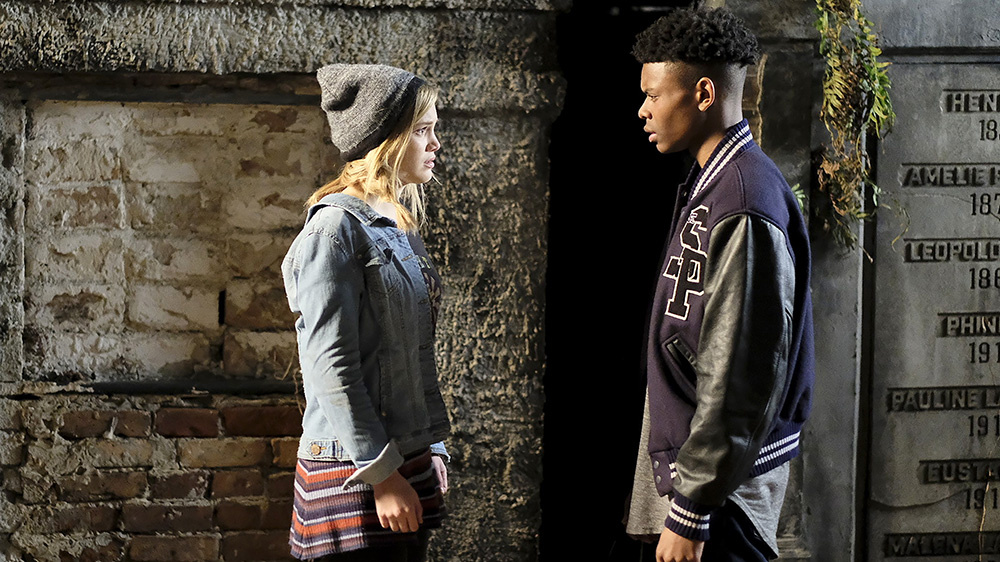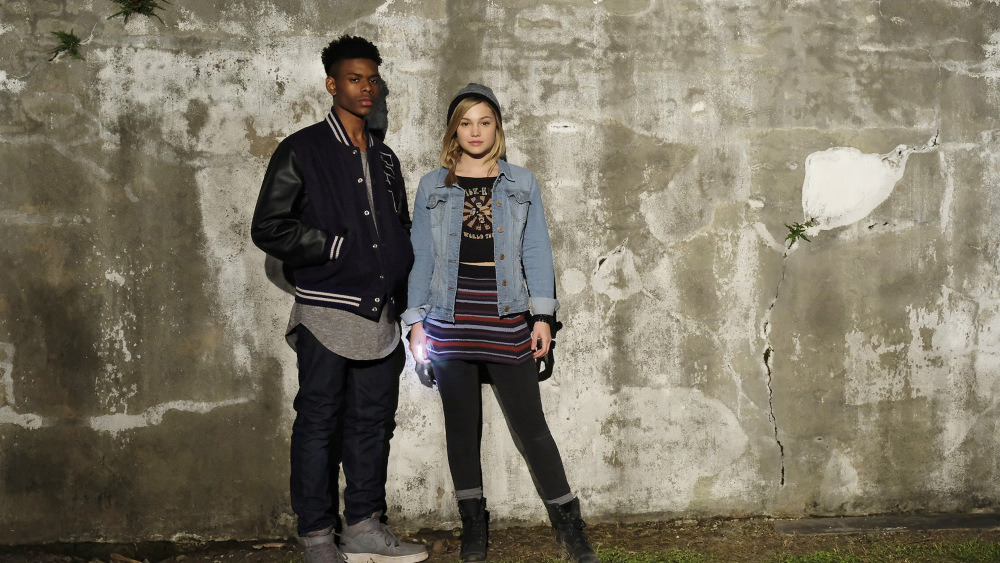Summary
Marvel’s Cloak & Dagger gets off to a strong start with “First Light” and “Suicide Sprints”, introducing it’s ostracised heroes to a socially-conscious world of corruption, poverty and trademark superpowers.
Despite being poised to become the next young-adult fascination, Marvel’s Cloak & Dagger doesn’t really feel like a show for teenagers, or really like a superhero show at all. The first two episodes, “First Light” and “Suicide Sprints”, both aired last night, and when we first met the titular heroes (although nobody calls them “Cloak” or “Dagger”, at least not yet), it wasn’t as superpowered world-savers but as children.
In the pre-titles sequence of “First Light”, Tandy Bowen (Olivia Holt) and Tyrone Johnson (Aubrey Johnson) both lose something close to them and find each other – at least temporarily. We fast-forward several years after that, to their teenage lives, with Tandy living part-time as a vagrant as she attempts to maintain a relationship with her alcoholic mother, and Tyrone channelling the guilt over his brother’s death into his role on the local prep school’s basketball team.
It probably isn’t a coincidence that the moneyed, blonde white girl makes a living by deploying her classic good looks as a grifter, date-raping privileged dudes and nabbing their valuables, or that the black kid is a stand-up, driven athlete who is tee-total and pally with the school’s priest. Marvel’s Cloak & Dagger revels in these kinds of subversions, while at the same time acknowledging that for all Tandy and Tyrone’s efforts to outgrow their social mould, they’re nonetheless constrained by the usual anxieties of an underrepresented race and class. Tyrone’s above-board, within-the-rules attitude doesn’t make him any less likely to get gunned down by the police, and Tandy’s winsome beauty does nothing for her in the abandoned squat where she snorts lines of crushed prescription pills.

This is darker, more challenging stuff than you’d expect, but also more honest to the reality of underserved communities than the typically aspirational stories of individualism that most superhero properties peddle. Marvel’s Cloak & Dagger is set in New Orleans, a city of stark class disparity, but one also notable for its resilience; its ability to rebuild itself following disaster and destruction. There’s a sense of it, as a place, having been failed by the institutions intended to preserve and protect it. It gives the show more of a social texture than, say, Marvel’s Runaways, which captured the angst of its teenaged cast, but never managed to bed them into a setting beyond their sun-bleached lap of luxury.
Across both “First Light” and “Suicide Sprints”, Marvel’s Cloak & Dagger has been reluctant to have its heroes develop a relationship; they meet only briefly, and then are apart again, embroiled in their own injustices. Their mysterious connection is obvious and known to them almost immediately, but its true nature thus far remains a mystery, to both the characters and the audience. Tandy can summon forth a dagger of ethereal light; Tyrone can teleport himself beneath any cloak-like material. Neither they nor I have any clue why.
The greatest achievement of Marvel’s Cloak & Dagger is not the efficiency with which it builds depth of character, or how ably it maintains tone and theme, or its performances or symbolic shot composition or any of that. It’s that it isn’t preachy or boring, when by all accounts it should be both. That’s why it’ll resonate, although admittedly for some more than others. It isn’t about loneliness or alienation – it’s about what happens when two lonely and alienated people find each other. The powers are beside the point.



